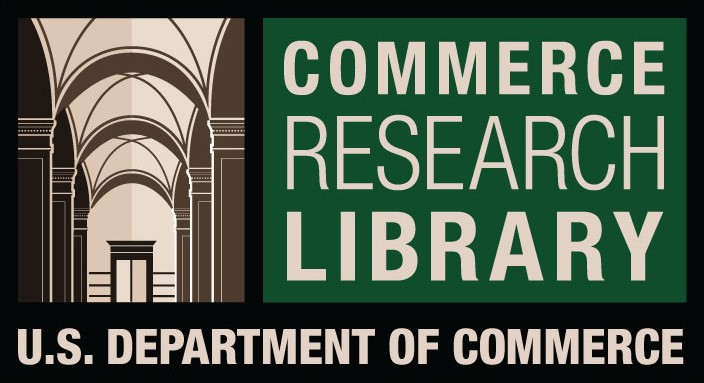Students’ Learning Attitudes toward CDIO- Based Business Administration Course Design: An Investigation from two Universities in Central Vietnam
DOI:
https://doi.org/10.61841/59g14v09Keywords:
CDIO-based, Business Administration students, creative thinking, learning attitudesAbstract
The purpose of this study was to investigate students’ learning attitutes toward the application of “Conceive-Design-Implement-Operate” (CDIO) approach in two Departments of Economics-Business Administration Faculty in two universities in Central Vietnam. The study aimed to investigate students’ creative thinking ability, problem-solving ability and their attitudes toward this ‘learning by doing’ and ‘outcome-based learning’ method. The sample was composed of 339 students from two departments of those two universities who were chosen to complete a 32-item questionnaire on a Likert scale to measure their learning attitudes toward the CDIO-based Business Administration courses. The results showed that students are more engaged and motivated in the courses, and they learn how to integrate feedback from their peers. Overall, all the students have positive attitudes toward the CDIO-based program and they are willing to take more relevant courses in the future.
Downloads
References
1. Alexander, M. (2017). The Imagination Challenge. Berkeley, CA: New Riders.
2. Ayob, A., Hussain, A., & Majid, R. A. (2017). A review of research on creative lecturers in higher education. International Educational Studies, 6(6), 8-14.
3. Benabou, R. (2017). Intrinsic and extrinsic motivation. Review of Economic Studies, 70(5), 489-520.
4. Burns, R. B. (2000). Introduction to research methods (4th ed.). New South Wales: Longman.
5. Chen, C., & Zhu, Z. (2015). Reform in engineering education based on the concept of CDIO education. Education and Modernization, 3(1), 30-33.
6. Christensen, C. M. (2013). The Innovator’s Dilemma. New York: Harper Business Essentials.
7. Cloutier, G., Hugo, R., & Sellens, R. 2011. Mapping the relationship between the CDIO syllabus and the CEAB graduate attributes: An update. Proceedings of the 7th International CDIO Conference, Copenhagen, Denmark.
8. Crawley, E. F., Malmqvist, J., Östlund, S., & Brodeur, D. R. (2012). Rethinking Engineering Education (2nd Ed). Springer Singapore: Springer.
9. Creswell, W. J. (2014). Research design: Qualitative, Quantitative and Mixed methods Approaches (4th Ed.). Thousand Oaks, CA: Sage.
10. Dai, B., Xu, W., Lan, B., Wang, T., & Hang, Z. (2017). The evaluation method of the CDIO syllabus achievements based on the examination scaling point. Proceedings of the 13th International CDIO Conference, Calgary, Canada.
11. Dillman, D. A. (2000). Mail and Internet surveys: The tailored design method. New York: John Wiley & Sons.
12. Đỗ, T. H. (2015). Dạy học theo hướng tiếp cận CDIO trong đào tạo giáo viên kĩ thuật trình độ đại học, Luận án tiến sĩ Khoa học Giáo dục. Retrieved from http://vnies.edu.vn/upload/Boiduong/dothehung.pdf.
13. Dunne, D., & Martin, R. (2016). Design thinking and how it will change management education: an interview and discussion. Academy of Management Learning & Education, 5(4), 512-523.
14. Dym, C. L., Agogino, A. M., Eris, O., Frey, D. D., & Leifer, L. J. (2015). Engineering design thinking, teaching, and learning. Journal of Education, 14(6), 103-120.
15. Felder, R. M., & Brent, R. (2015). Understanding student differences. Journal of Education, 94(1), 57- 72.
16. Gardner, H. (2010). Five Minds for the Future. Harvard: Harvard Business University Publisher.
17. Gibson, H. (2017). What isn’t creativity: The presumptions of instrumental and individual justifications for creativity in education. British Journal of Education Studies, 53(2), 148-167.
18. Gunnarsson, S., Herbertsson, H., & Orman, H. (2019). Using course and programme matrices as components in a quality asssuarance system. Proceedings of the 15th International CDIO Conference, Aarhus University, Denmark.
19. Hmelo-Silver, C. E. (2014). Problem-based learning: What and how do students learn? Educational Psychology Review, 16(3), 235-266.
20. Jonassen, D. (2018). Supporting problem solving in PBL. Interdisciplinary Journal of Problem-Based Learning, 5(2), 95-119.
21. Lee, J. (2018). Experiences of intensive English learners: Motivations, imagined communities, and identities. English Language Teaching, 7(11), 28-38.
22. Li, M. (2018). Applying the CDIO engineering education standards to optimize services provided by subject librarians. World Transactions on Engineering and Technology Education, 12(4), 623-627.
23. Lim, D. H., & Kim, H. (2013). Motivation and learner characteristics affecting online learning and learning application. Journal of Educational Systems, 31(4), 423-439.
24. Malmqvist, J. (2016). A comparison of the CDIO and Eurace quality assuarance systems. Proceedings of the 12th International CDIO Conference, Singapore Polytechnic, Singapore.
25. Nassir, M. H., & Chong, C. H. (2016). CDIO attainment for Taylor’s undergraduate chemical engineering programme. Taylor’s 7th Teaching and Learning Conference 2016 Proceedings, 235-245.
26. Ha, N. H., Nguyen, D. M., Nayyar, A., & Liu, C. A. (2019). Enhancing students’ softskills by implementing CDIO-based integration teaching model. Proceedings of the 15th International CDIO Conference, Aarhus University, Denmark.
27. Pittaway, L., & Cope, J. (2017). Simulating entrepreneurial learning: Integrating experiential and collaborative approaches to learning. Management Learning, 38(2), 211-233.
28. Platner, H. (2010). An Introduction to Design Thinking Process Guide. [Online]. pp. 1-6. Retrieved from https://duniversity.stanford.edu.
29. Prince, M. J., & Felder, R. M. (2016). Inductive teaching and learning methods: definitions, comparisons, and research bases. Journal of Engineering Education, 95(2), 123-138.
30. Ryan, R. M., & Deci, E. L. (2010). Intrinsic and extrinsic motivations: Classic definitions and new directions. Contemporary Educational Psychology, 25(3), 54-67.
31. Tran, H. N., & Phan, V. N. (Mar 2020). Evaluating the CDIO-based business administration training programme using the CDIO self-evaluation rubrics at Ha Tinh University in Vietnam. Journal of Critical Reviews, 7(3), 354-360. Doi: http://www.jcreview.com/fulltext/197-1584003423.pdf?1584106122
32. Tran, H. N., Hallinger, P., & Truong, D. T. (2018), The heart of university improvement: A multi-site case study of leadership for lecturer learning in Vietnam. University Leadership and Management, 38(1), 80-101. Doi: 10.1080/13632434.2017.1371690
33. Tran, H. N., Nguyen, D. C., Nguyen, G. V., Ho, T. N., Bui, T. Q. T., & Hoang, N. H. (Jan 2020).
Workplace conditions created by principals for their lecturers’ professional development, International Journal of Leadership in Education, 23(1). Doi: https://doi.org/10.1080/13603124.2019.1708472.
34. Vũ, A. D., & Phùng, X. N. (2015). Adaptation of CDIO-Based Learning Outcomes for Non-Business administration Disciplines: A Case study of Higher Educational System in an Emerging Country. Journal of Business Administration Technology and Education, 9(1), 101-112.
Downloads
Published
Issue
Section
License

This work is licensed under a Creative Commons Attribution 4.0 International License.
You are free to:
- Share — copy and redistribute the material in any medium or format for any purpose, even commercially.
- Adapt — remix, transform, and build upon the material for any purpose, even commercially.
- The licensor cannot revoke these freedoms as long as you follow the license terms.
Under the following terms:
- Attribution — You must give appropriate credit , provide a link to the license, and indicate if changes were made . You may do so in any reasonable manner, but not in any way that suggests the licensor endorses you or your use.
- No additional restrictions — You may not apply legal terms or technological measures that legally restrict others from doing anything the license permits.
Notices:
You do not have to comply with the license for elements of the material in the public domain or where your use is permitted by an applicable exception or limitation .
No warranties are given. The license may not give you all of the permissions necessary for your intended use. For example, other rights such as publicity, privacy, or moral rights may limit how you use the material.









